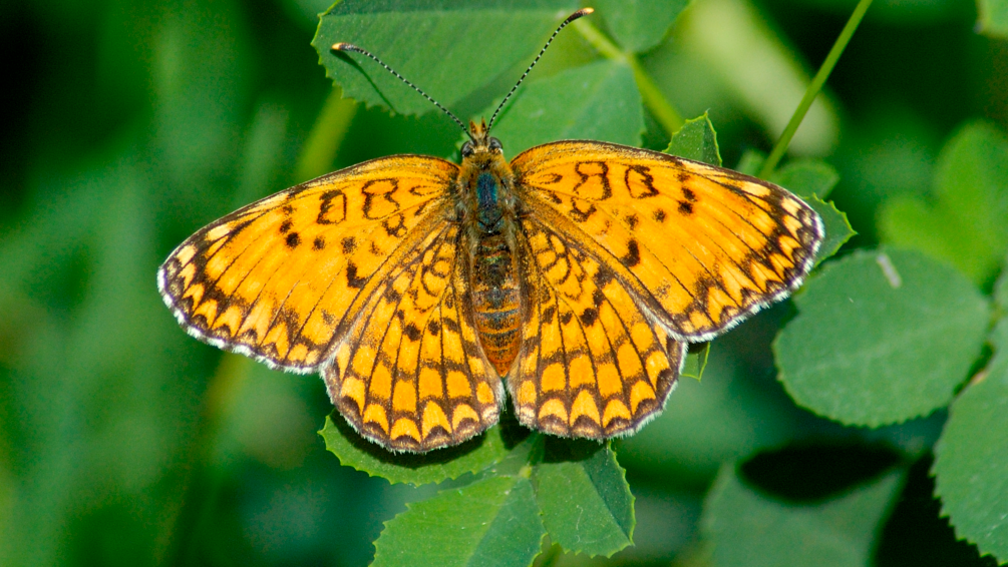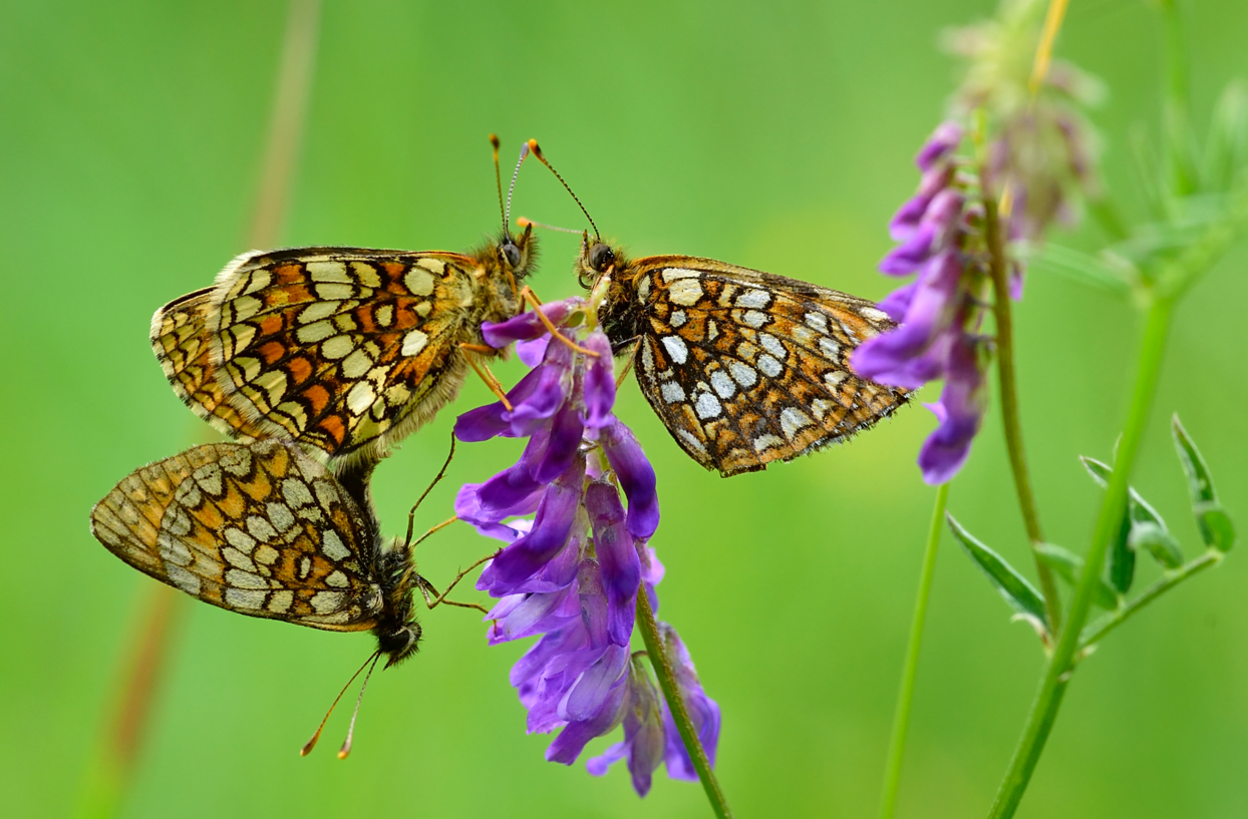Plants grown for rare butterfly spotted by reservoir

The Heath Fritillary butterfly was considered to be on the brink of extinction in the 1970s
- Published
A rare species of butterfly spotted at a reservoir in Essex has been encouraged to stay after insect-friendly vegetation was allowed to take hold.
The Heath Fritillary butterfly was considered to be on the brink of extinction in the 1970s but was seen at Oakwood Reservoir by an Essex & Suffolk Water employee.
The utility company, along with Essex Wildlife Trust and the Butterfly Conservation team, have spent the past three years growing cow-wheat at the site for the butterfly to use as a food source.
Ashley Pinnock, Essex & Suffolk Water's conservation specialist, said he "couldn't believe it" when the protected species flew past him at work.

The butterflies live for approximately three weeks and are spotted in the months of May and June.
Listen: Rare butterfly found on Essex reservoir
"I immediately investigated what I could do to preserve and manage their habitat and in the past three years I've seen both male and female butterflies, but no caterpillars yet," he said.
"Working with our partners we've learnt that the butterflies have been using Oakwood Reservoir as a stepping-stone between two woodlands, Pound Wood and Hadleigh Great Wood.
"It's so important, because these are rare butterflies, with just a few remaining strongholds in Britain where they can be seen.
"Allowing them to migrate from one location to the next is important for their breeding and genetics, to ensure the future of the species."
The butterflies live for about three weeks and are spotted in May and June.
Since 2016, the number of Heath Fritillary butterflies in Pound Wood increased from 40 sightings each year to 120 in 2021.
In Hadleigh Great Wood, which is owned by Southend-on-Sea City Council, the numbers rose from seven sightings in 2016 to 75 in 2021, with a peak of 148 in 2019.
Meg Davidson, cabinet member for environment at Southend-on-Sea City Council, said: "It is wonderful to hear of such great partnership working to make sure these rare and protected butterflies are given the best opportunity and conditions to thrive.
"The discovery shows how important it is to have connected habitats for the species to flourish."
Follow East of England news on Facebook, external, Instagram, external and X, external. Got a story? Email eastofenglandnews@bbc.co.uk, external or WhatsApp us on 0800 169 1830